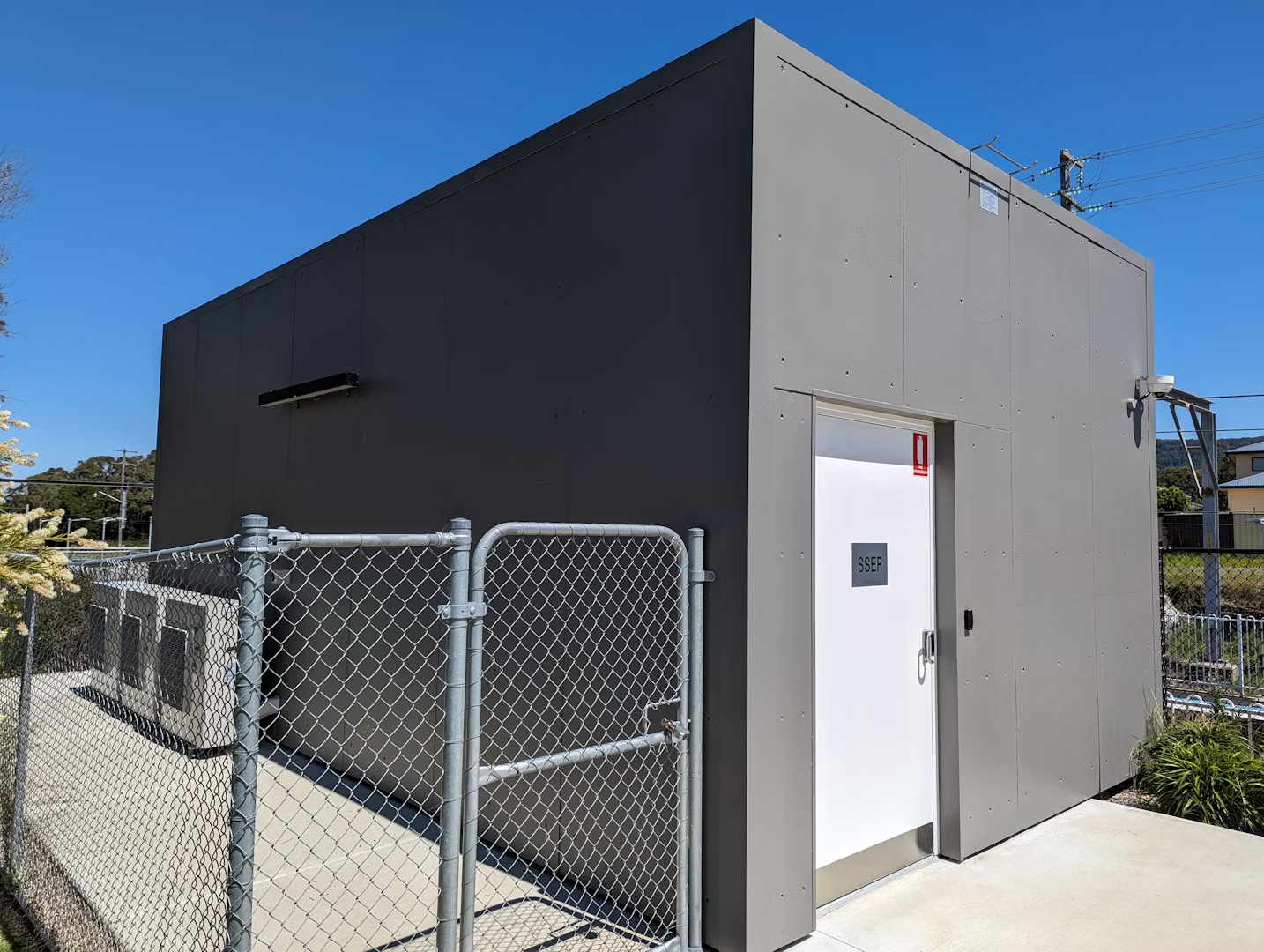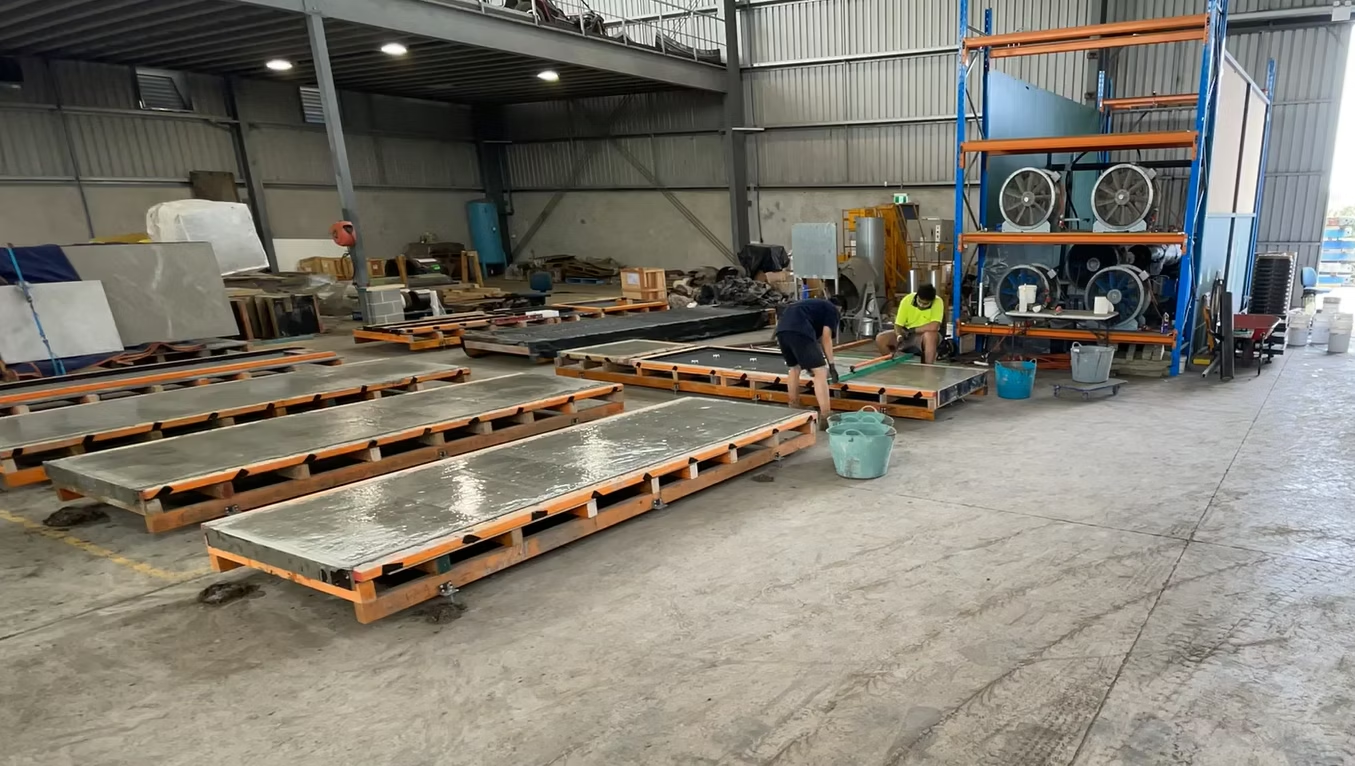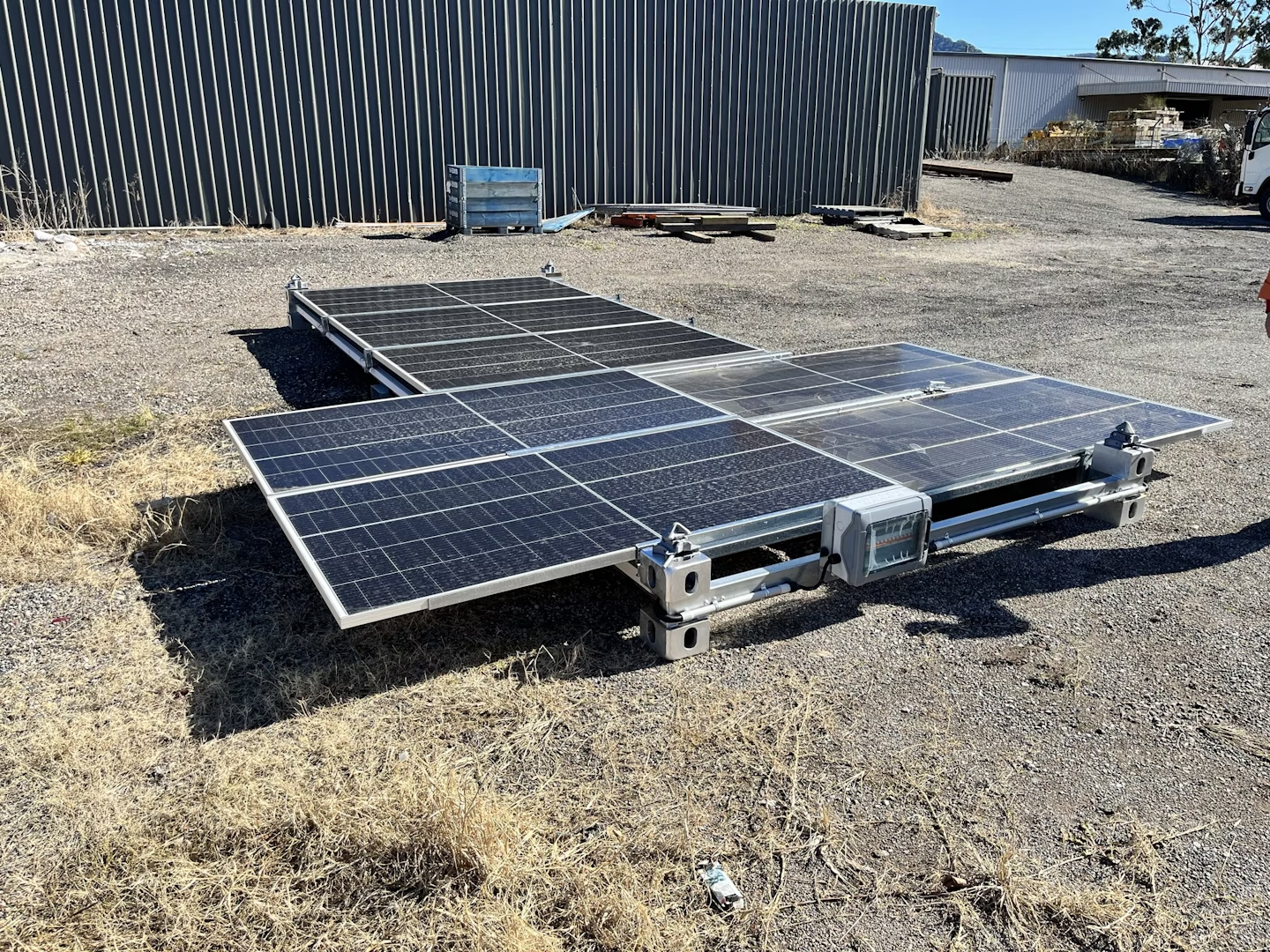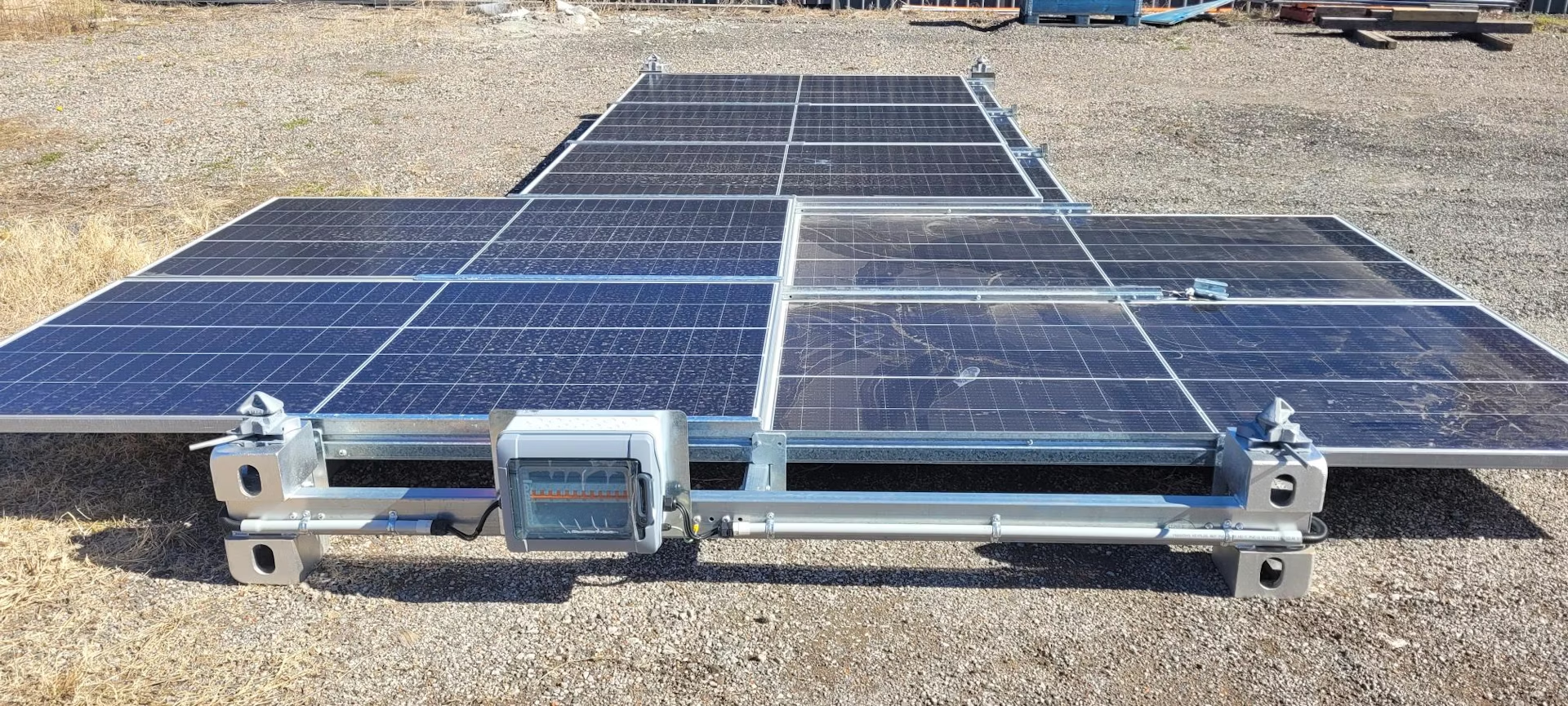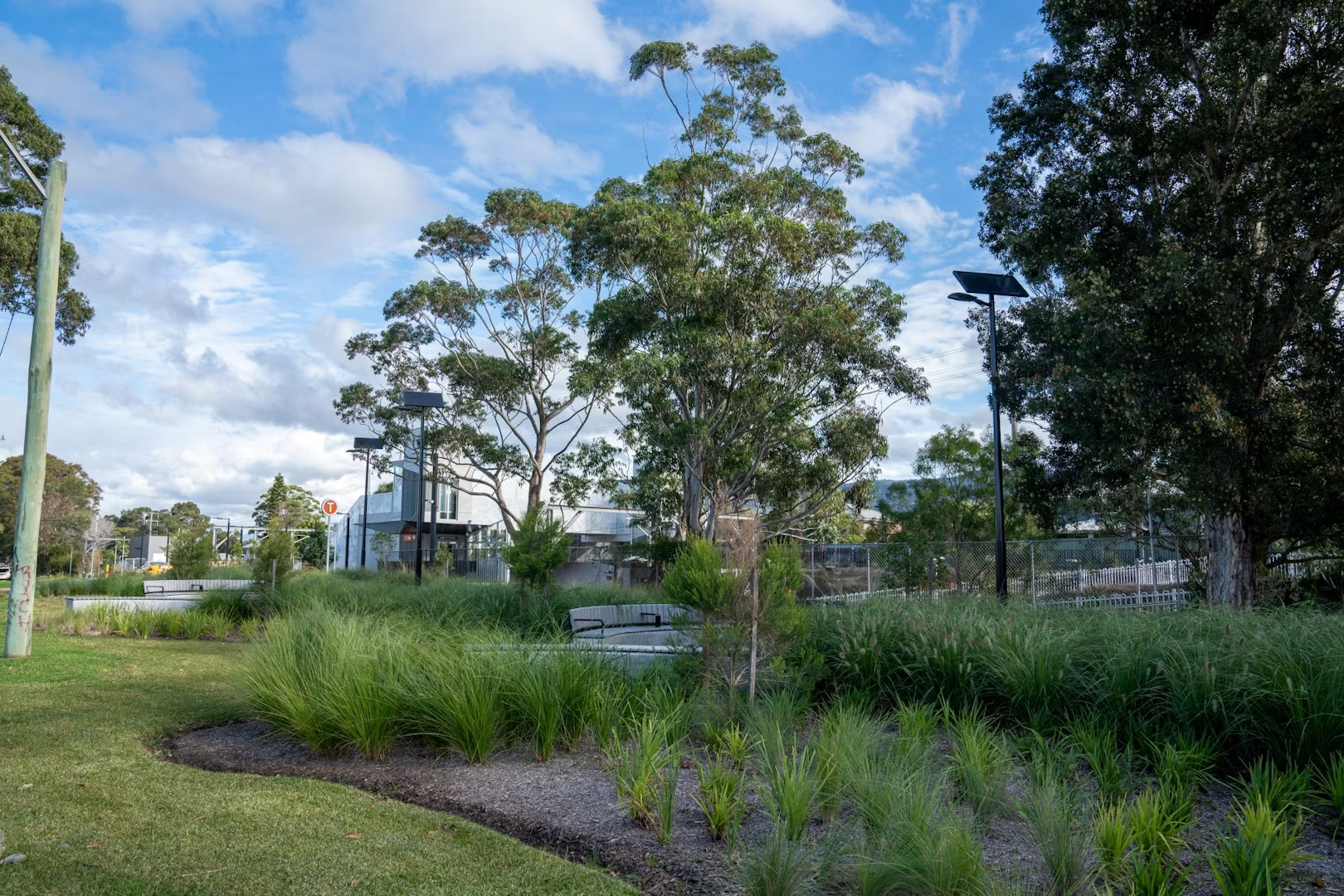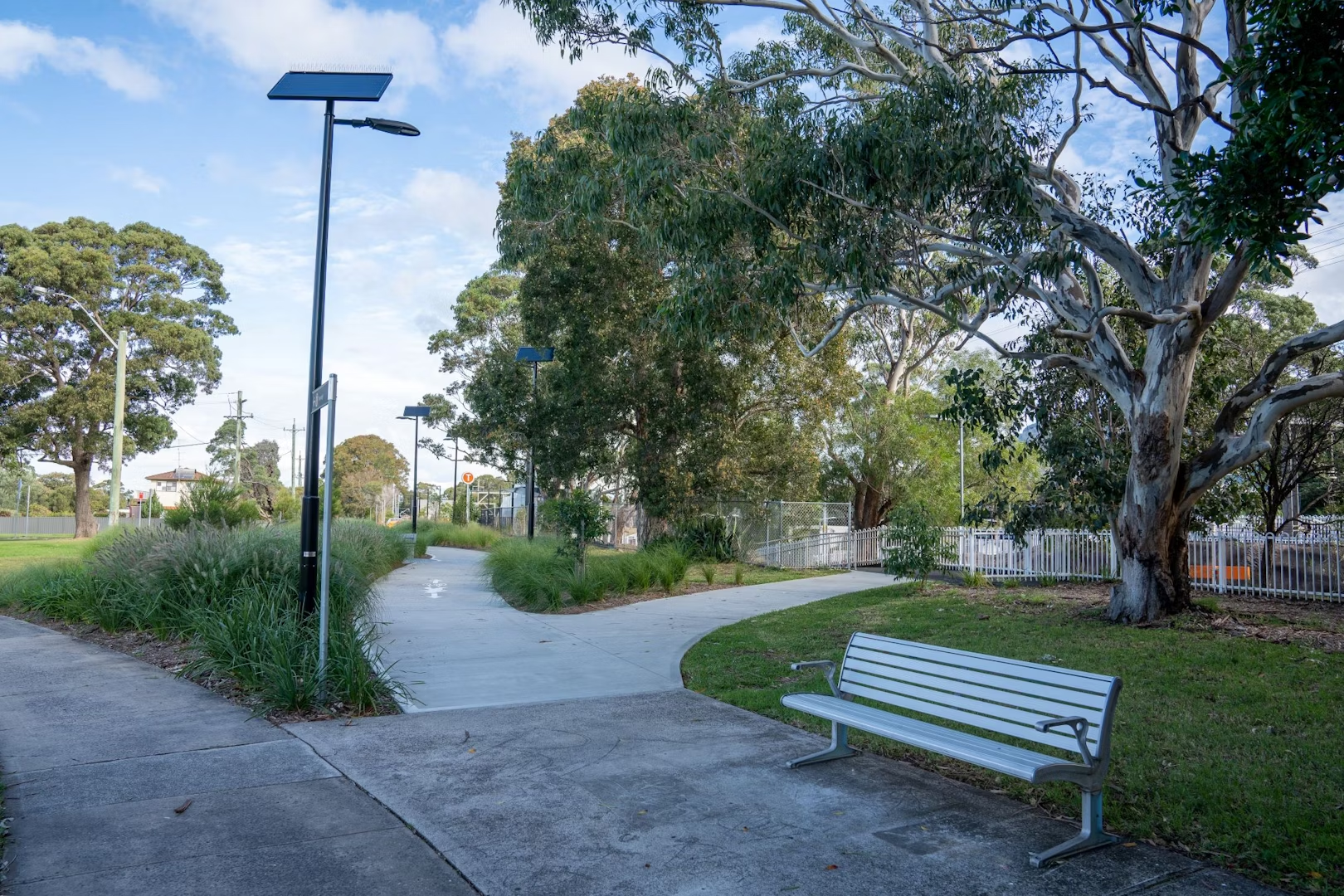Unanderra and Towradgi Station Upgrade Projects – Degnan and Transport for NSW – Environmental Outcomes
Degnan & Transport for NSW delivered the Towradgi and Unanderra Station Upgrade projects, which included a number of sustainability initiatives and partnerships. Through working with Makinex to develop a containerised solar PV battery system designed for easy transport and installation on construction sites, the Unanderra project integrated renewable energy generation and storage within a compact footprint. The system’s unique mounting allows secure attachment to standard shipping containers, offering quick, cost-effective deployment. Additionally, in collaboration with the Sustainable Building Research Centre (SBRC) at the University of Wollongong, Degnan implemented an innovative low-carbon foamed concrete façade at the Towradgi project, reducing carbon emissions by up to 61%. Both initiatives have achieved ISC-verified Australian-First Innovations.
Describe WHAT you have done and HOW you have done it. Please provide a summary of your initiative, innovation, or approach.
The Unanderra and Towradgi Station Upgrade Projects were delivered by Degnan and Transport for NSW’s under the Transport Access Program (TAP) which aims to improve public transport accessibility for individuals with disabilities, parents and carers, and travellers with luggage. Located in the Illawarra region, the upgrades included new accessible lifts, footbridges, enhanced parking, and improved station amenities to promote equitable access.
Both projects achieved significant sustainability outcomes, earning ISC v1.2 Leading ratings—Towradgi with a score of 82.66 and Unanderra with 84.06. These results were driven by innovative technologies and materials, including two verified Australian-First Innovations.
Container-Top Re-Deployable Solar PV
The Makinex containerised solar PV system was a key feature at Unanderra, providing on-site renewable energy generation and storage. This flexible, transportable system integrated with the local power grid while adhering to restrictions on exporting energy to the Sydney Trains network. Mounted on shipping containers, the system offered a quick, cost-effective solution for deploying renewable energy on construction sites. Its innovative design supports sustainable energy use, reducing reliance on grid power and simplifying approvals.
Australian-First Foamed Concrete
In collaboration with the University of Wollongong’s Sustainable Building Research Centre, the Towradgi project introduced a novel foamed concrete cladding panel. This material, made with recycled glass and carbon fibre mesh, offers a low-carbon alternative to traditional concrete, reducing embodied carbon by up to 61%. The lightweight design also cut transport-related emissions, underscoring the benefits of academic-industry partnerships in advancing sustainable construction.
Energy Efficiency and Emission Reductions
Towradgi’s design prioritised long-term energy efficiency, implementing high-efficiency LED lights and solar-powered light poles to reduce grid reliance. Construction methodologies were optimized to minimize diesel use, contributing to a 39% reduction in lifetime energy consumption and an 81% decrease in energy-related carbon emissions through the use of green power.
Ecological Enhancements
Both projects significantly improved ecological value by replacing exotic vegetation with native species and creating greener spaces. Unanderra Station achieved an 846% increase in ecological value, reaching Level 3 in the Infrastructure Sustainability Council’s Eco-1 credit, while Towradgi saw a 22% improvement, also reaching Level 3. These upgrades transformed urban areas into ecologically vibrant spaces, demonstrating a commitment to environmental sustainability and community engagement.
Through these innovative approaches, the Unanderra and Towradgi Station Upgrades delivered enhanced accessibility, environmental sustainability, and community benefits.
What were the OUTCOMES and how were those outcomes shared?
Container-Top Re-Deployable Solar PV
The implementation of the Makinex system enabled the project to generate its own renewable energy while retaining the flexibility to switch to the Sydney Trains network when required. This dual capability made the system highly adaptable, offering a practical, all-in-one solution without the need for project-specific equipment. Additionally, the system’s design allowed for rapid installation to site elements common to most infrastructure projects.
Once operational, the Makinex system met an average of 47% of the site’s daily energy needs. The success of this outcome was shared with the wider industry through several knowledge-sharing workshops. These workshops were organised by Transport for New South Wales (TfNSW) and aimed at disseminating information to similar projects, highlighting the potential for renewable energy integration within the constraints of the Sydney Trains network. This also aligned with TfNSW’s innovation objectives, which emphasise the need for sustainable energy solutions in rail infrastructure projects.
The outcomes of the Makinex system, alongside innovations such as foamed concrete, were further presented at multiple Risks and Opportunities, Constructability, and Knowledge Sharing (ROCKS) workshops. These workshops, involving TfNSW and the broader industry, provided a platform for sharing the achievements and insights gained from the deployment of these innovations, facilitating the advancement of renewable energy adoption in infrastructure projects.
Australian-First Innovation: Foamed Concrete
The foamed concrete innovation achieved its primary outcome of successfully testing a novel research mix design with the potential to reduce embodied carbon in concrete cladding. Developed as part of a PhD research project at the University of Wollongong, this mix achieved sufficient strength at half the thickness and with significantly lower density compared to traditional concrete. The mix also incorporated circular economy principles, using recycled crushed glass as an aggregate.
As part of the collaboration with the UOW SBRC a Knowledge Sharing Workshop between the UOW SBRC, TfNSW and Degnan was facilitated – connecting educational institutions, government and industry.
The outcomes of this trial were also widely shared through various communication channels, including LinkedIn announcements, TfNSW sustainability bulletins, and presentations to industry groups. These platforms helped raise awareness about the innovation and its importance in promoting sustainable practices in the construction industry. The successful results underscored the value of trialling new materials and products to advance industry sustainability, positioning the foamed concrete as a critical development in reducing the environmental impact of infrastructure projects.
Operational Energy
The project’s operational energy outcomes centred on reducing energy usage and associated costs across two Station upgrades. By lowering the local grid energy demand, the project assists in mitigating the need for costly infrastructure upgrades, providing significant value to taxpayers in addition to energy costs. The introduction of solar-powered lights, which eliminated the need for cables, conduits, concrete, quarry materials, and associated fuel and labour, contributed further to cost savings and sustainability.
Additionally, the operational energy utilises green power, greatly reducing the carbon intensity of the operations. These outcomes not only lowered operating costs for Sydney Trains but also enhanced the environmental performance of the stations. By using renewable energy sources, the project aligned with broader sustainability goals, with lessons learned shared across similar infrastructure projects to encourage the adoption of green energy solutions.
Ecological Enhancement
The Unanderra Station Upgrade achieved an impressive 846% increase in ecological value, creating native green spaces and improving local biodiversity. This outcome was particularly significant for enhancing the local environment while providing social and aesthetic benefits for the community.
In Towradgi Station, the adjacent Weber Park was transformed into an Aboriginal interpretation area, complete with a new meeting place and native plantings that revitalised local biodiversity. These ecological improvements were shared as part of the project’s broader environmental impact initiatives, demonstrating how infrastructure projects can enhance ecological value and foster community engagement. These efforts highlighted the importance of integrating sustainability and cultural considerations into public infrastructure projects.
By integrating these diverse innovations across renewable energy, sustainable materials, operational efficiency, and ecological enhancement, the project demonstrated a strong commitment to advancing industry sustainability. The outcomes were widely shared through workshops, bulletins, and industry platforms, fostering a culture of knowledge sharing and continuous improvement.
Describe WHO benefited from your initiative, innovation, or approach?
Energy and GHG Reductions
The reduction in operational energy demand provided broad benefits, starting with climate action. By contributing to decarbonisation efforts, the initiative helps mitigate climate change, benefiting the global community by reducing global greenhouse gas (GHG) emissions. The energy cost savings also benefits taxpayers and local communities, as they allow for more efficient use of public funds, freeing up resources for further infrastructure improvements.
The Makinex system brought specific advantages to Degnan and TfNSW by reducing the costs associated with relocating renewable energy systems. This prototype has since been developed into a commercially available system, encouraging greater uptake of renewable energy in construction projects. This adoption supports the broader goal of decarbonising the construction industry, with proven success at the Unanderra project, offering a scalable solution for integrating renewable energy into future infrastructure developments.
The foamed concrete innovation significantly benefited the University of Wollongong (UOW) researchers, offering them the opportunity to test their innovative concrete mix in a real-world setting. This testing allowed the researchers to investigate any scaling issues that might arise when moving from laboratory-scale production to commercial application. The valuable feedback gathered from the project will help the research team refine the design of the foamed concrete and further its development as a low-carbon alternative in construction.
Ecological Enhancement
The Unanderra and Towradgi Station Upgrades provided tangible benefits to the local community by significantly enhancing the ecological value of the area. Residents and commuters now enjoy a greener, more sustainable environment, with increased native biodiversity and improved green spaces. These improvements contribute to a healthier, more pleasant urban setting, fostering a stronger connection between the community and their natural surroundings.
The initiative also supports local wildlife by creating habitats for native species, promoting ecological balance, and enhancing the area’s environmental quality. By fostering a more biodiverse and vibrant ecosystem, the projects have improved the quality of life for both human and animal residents of the area, leaving behind a legacy of environmental stewardship and community well-being.
What LEGACY and UN SDG CONTRIBUTION was achieved?
The Unanderra and Towradgi projects, utilizing Makinex’s containerised solar PV system, energy-efficient design, foamed concrete developed by the Sustainable Building Research Centre (SBRC), and ecological improvements, made substantial progress toward several United Nations Sustainable Development Goals (UN SDGs). These efforts leave a legacy of sustainability, environmental responsibility, and collaboration between industry and academia.
UN SDG Goal 9: Industry, Innovation, and Infrastructure
The projects advanced Goal 9 by pushing the construction industry to adopt low-carbon, emissions-reducing technologies. The Makinex system, which provides redeployable on-site renewable energy, and the innovative foamed concrete both challenged traditional methods by offering sustainable alternatives that meet the modern infrastructure needs.
Collaboration with academic institutions like SBRC was essential for the success of these innovations. The foamed concrete, developed as part of a PhD project, was tested in real-world conditions, bridging the gap between research and industry. This partnership allowed product refinements based on field feedback, ensuring that future infrastructure projects will benefit from improved, sustainable solutions.
By integrating industry challenges with academic research, the projects encouraged continuous improvement and innovation. This legacy of fostering collaboration and driving the development of emissions-reducing materials will benefit future infrastructure projects in Australia and beyond.
UN SDG Goal 12: Responsible Consumption and Production
The Unanderra and Towradgi projects significantly contributed to Goal 12, which promotes sustainable consumption and production patterns. The Makinex system reduced reliance on carbon-intensive grid power by generating renewable energy on-site, cutting greenhouse gas emissions and demonstrating practical applications of renewable energy in construction. This innovation’s adaptability and scalability allow it to be applied to future construction projects.
Foamed concrete also played a vital role in lowering the projects’ carbon footprint. By using recycled glass and carbon fibre reinforcement instead of traditional steel, the foamed concrete mix reduced embodied carbon. Additionally, its lightweight properties helped reduce transport-related emissions, further supporting responsible consumption and production. These innovations demonstrate how material design and logistical efficiency can combine to promote lower-carbon construction.
The projects also achieved significant operational energy savings. By reducing energy demand and optimising energy use through technology and design, such as solar lighting and LED systems, they minimised local grid energy consumption. An impressive 81% of operational energy-related carbon emissions were eliminated using green power.
UN SDG Goal 15: Life on Land
The ecological enhancements at Unanderra and Towradgi Stations directly contributed to Goal 15, focused on protecting and promoting the sustainable use of terrestrial ecosystems. Through careful planning and the replacement of non-native vegetation with native species, these projects transformed low-value urban areas into ecologically vibrant green spaces.
At Unanderra Station, the Green Star Ecological Value Calculator confirmed an 846% increase in ecological value. The creation of green spaces provided habitats for local wildlife, including birds and pollinators like bees. Towradgi Station also improved its ecological value by increasing green spaces and planting native species, which boosted biodiversity.
These improvements created long-lasting green spaces that will continue to support local wildlife, enhance environmental quality, and benefit the well-being of the community. By incorporating sustainable landscaping into infrastructure projects, these efforts show how construction can coexist with ecological preservation, leaving a positive legacy for future generations.
Legacy of Sustainability
The Unanderra and Towradgi projects showcase sustainable infrastructure development by employing on-site renewable energy, low-carbon materials, and ecological restoration. These achievements ensure the projects contributed to global sustainability while meeting local needs, leaving a lasting positive legacy for future generations.


